Most homeowners don’t think much about the shape of their roof. After all, as long as it looks good and doesn’t leak, everything should be fine, right?
The truth is your roof shape affects your home’s ability to withstand high winds and other natural hazards that may be common in your area. In fact, you’ll often see more of a certain type of roof shape in a particular area because of the climate. Gable roofs, for example, are more common in rainy climates because the steep pitch prevents water from getting in the house.
Take a look at the following roof shapes to understand how yours might affect you.
Roof shape types
Gable
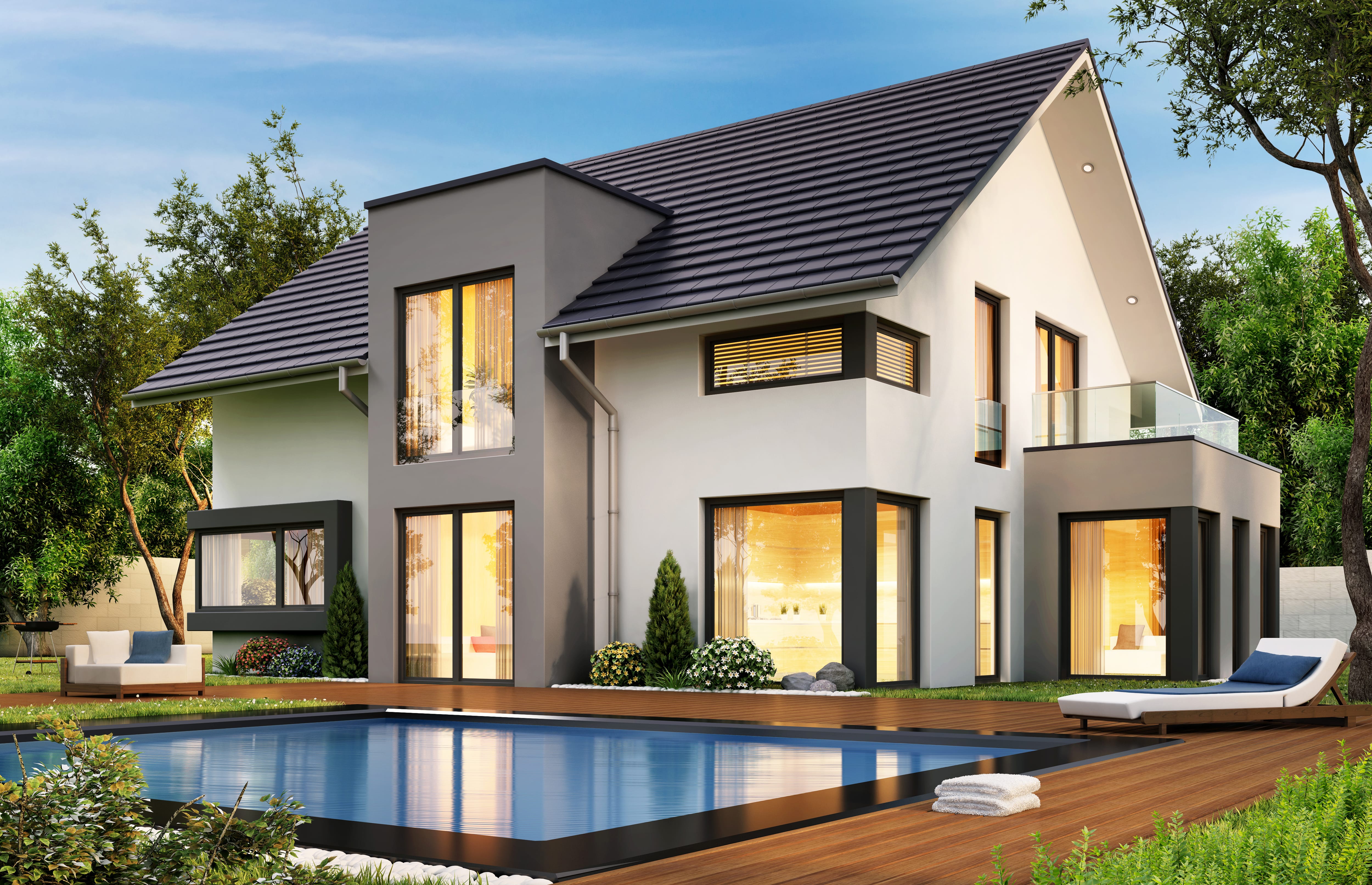
Gable roofs are one of the most common types of roof shapes you’ll find on a home, in part because they have a simple design and are affordable to build. They have two sloping sides that meet at the top ridge to form a triangle. Essentially, the house with a gable roof has two walls that are rectangular and two walls that are triangular to meet the pitch.
These are additional styles of gable roofs:
- False-front gable roof: This type of roof uses one or more gables to give the appearance of a gabled roof, typically to improve curb appeal by extending the roof line above the actual shallow-pitched roof.
- Cross-gable roof: A roof is called cross-gabled when it has two or more gable roof lines that intersect. The ridges typically run perpendicular to each other to form an L-shaped or T-shaped roof.
- Shed roof: Instead of two sections meeting at a point to form a triangle, a shed roof, also called a skillion, slants in one direction. Think of it as a high back wall with a steep pitch coming forward.
- Gable with curves: Adding curved elements to a gable roof, like eyebrow dormers, create softer lines in the overall look of the house. However, doing this means you can’t use metal roofing that comes in panels. Shingles in most materials should work fine.
A gable roof’s pitch means it’s a pretty good choice for rainy climates because the slop helps the house shed water. Unfortunately, they aren’t great in hurricanes. In a significant storm, gable roofs are more susceptible to wind damage than other types of roofs, so having one can affect your home insurance costs.
Hip
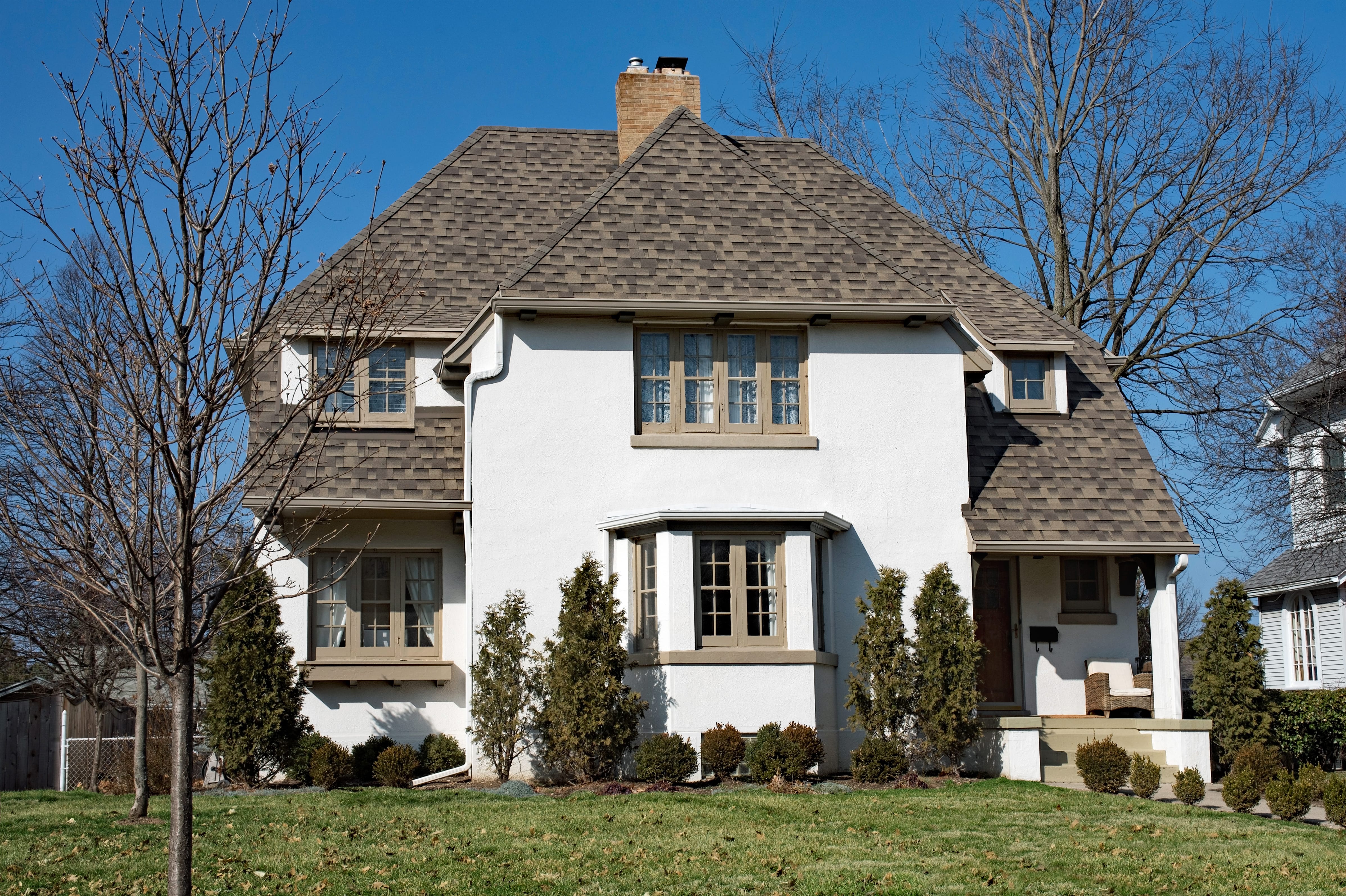
A hip roof is similar to a gable roof except that the hip roof has four sides that slant downwards. This makes for an interesting look, plus there are no valleys where leaves can collect, which helps with maintenance.
Hips roofs are sturdy and wind resistant, so you often see them in areas where there are frequent storms. Because the roof is four-sided, wind pressure is spread evenly throughout the perimeter of the roof, unlike a gable, which concentrates wind pressure in its topmost point.
However, you should note that hip roofs cost more to build than a gable roof and home prices will reflect that.
Gambrel
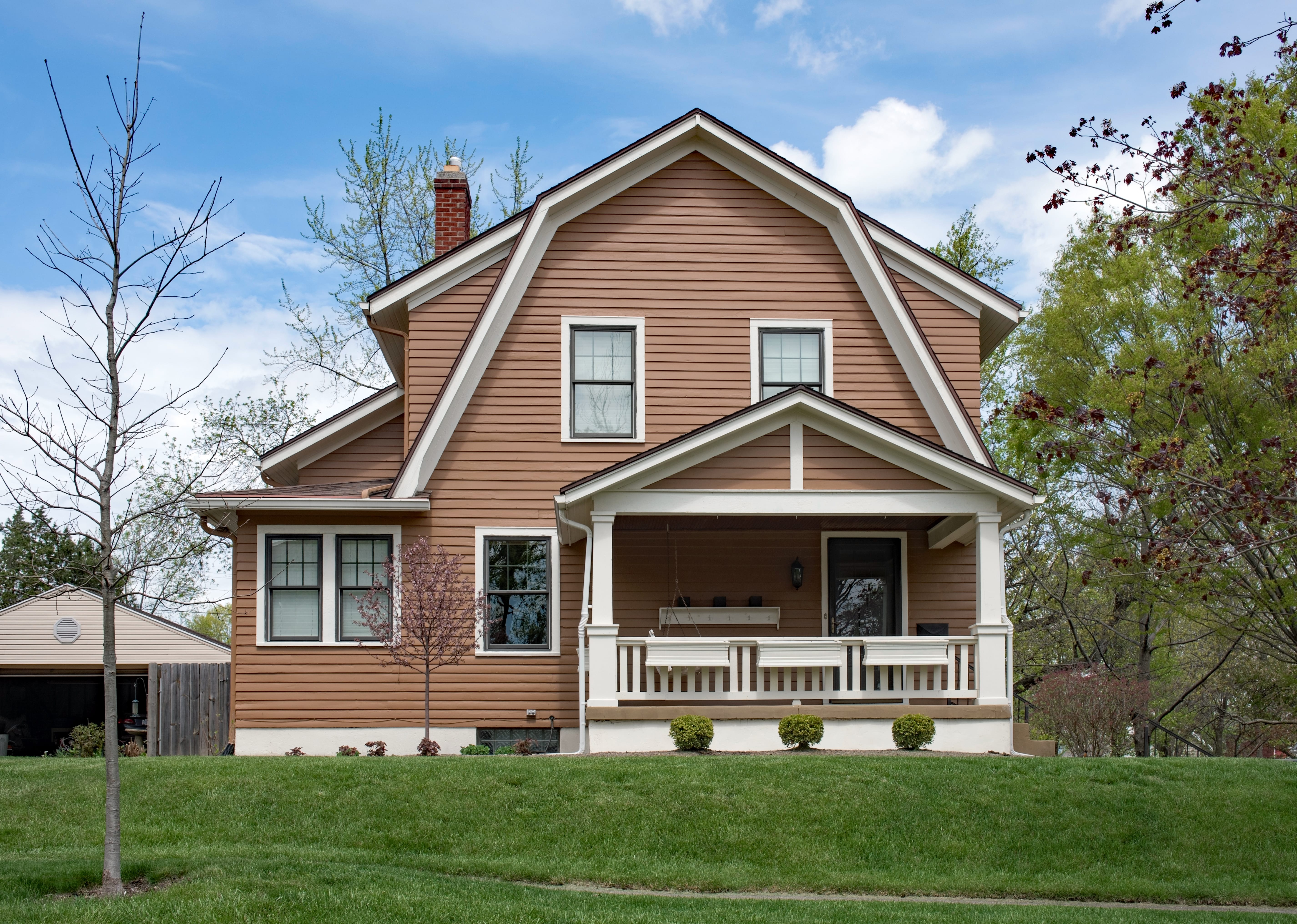
Though technically a type of gable roof, these deserve their own mention. Also called a barn roof, gambrel roofs have two different slopes and are often used in Dutch Colonial and Georgian style homes. The top sloping section is usually less steep than the bottom sloping section to maximize living space under the roof. Gambrel roofs also have narrow eaves that are heavily slanted.
Because of their open shape, gambrel roofs aren’t ideal for homes in high-wind regions. Like gable roofs, high winds can get leverage under the roof and force it upward.
Flat
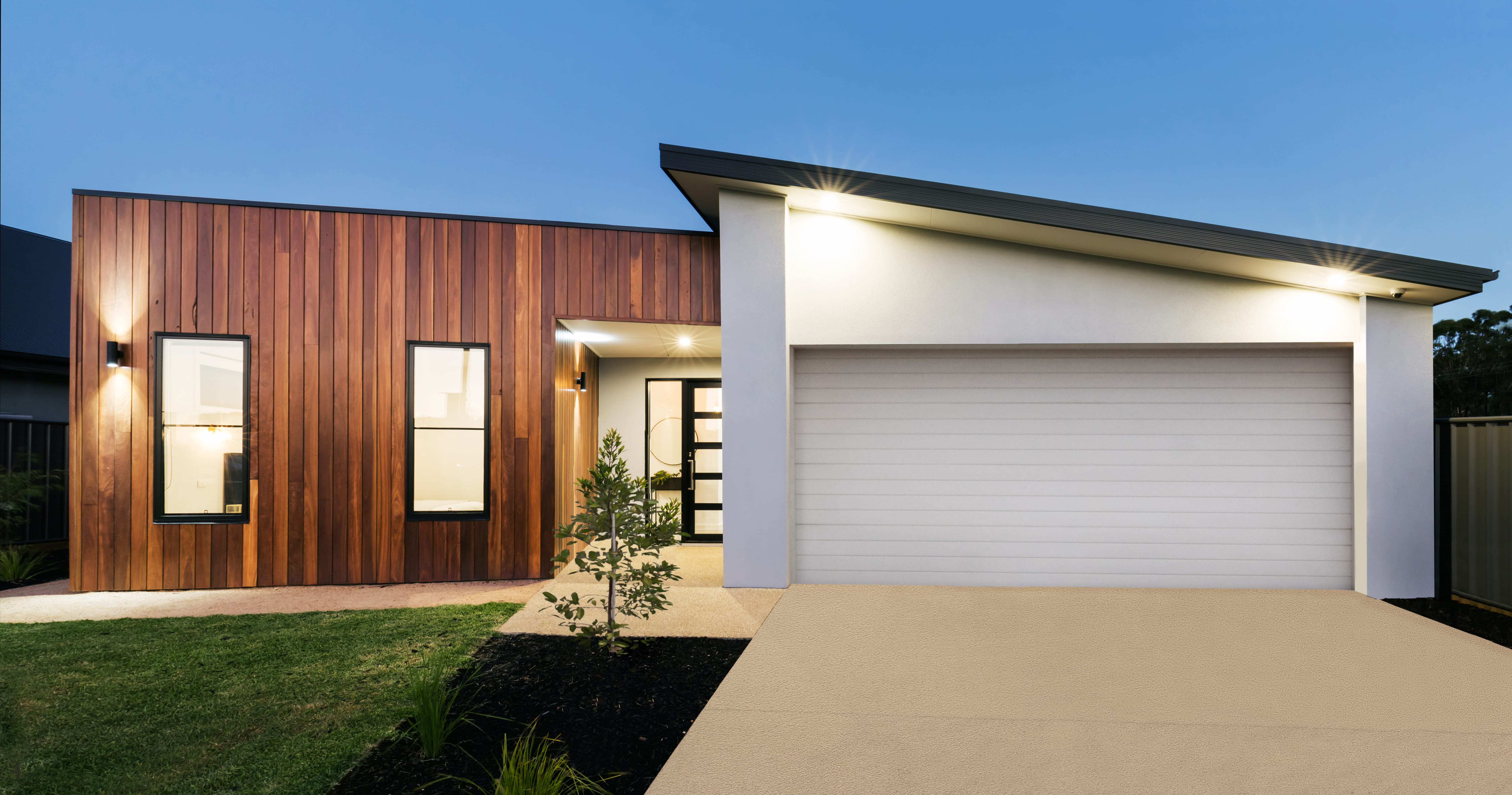
As its name suggests, a flat roof is, well, flat. These roofs have nearly no pitch, which allows for extra living space, like a rooftop garden. However, the lack of pitch also makes these roofs susceptible to damage from heavy rainfall or the weight of ice and snow.
Mansard
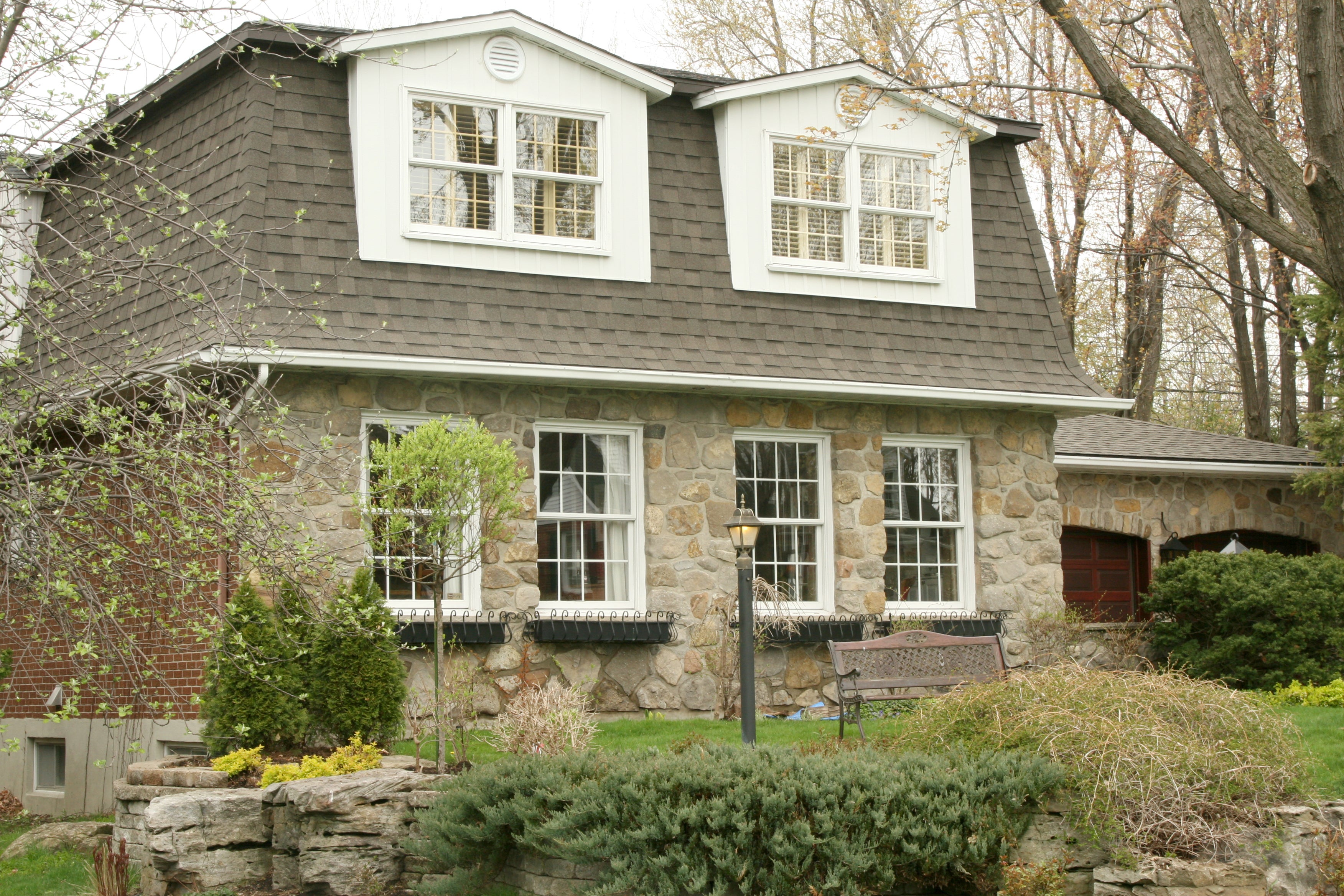
From the ground, a mansard roof looks like a lot like a hip roof with four steeply sloping side. However, it actually has another section that has a gentler pitch at the top. This is a common feature in French-styled homes. The low-pitched top section makes mansard roofs a good option in areas that get a lot of snow.
If you’re looking for a house, you definitely want to pay attention to the available roof shapes and look for one that provides both style and the appropriate protection. And if you’re already a homeowner, you can check out some additional tips for making your home more wind resistant.


